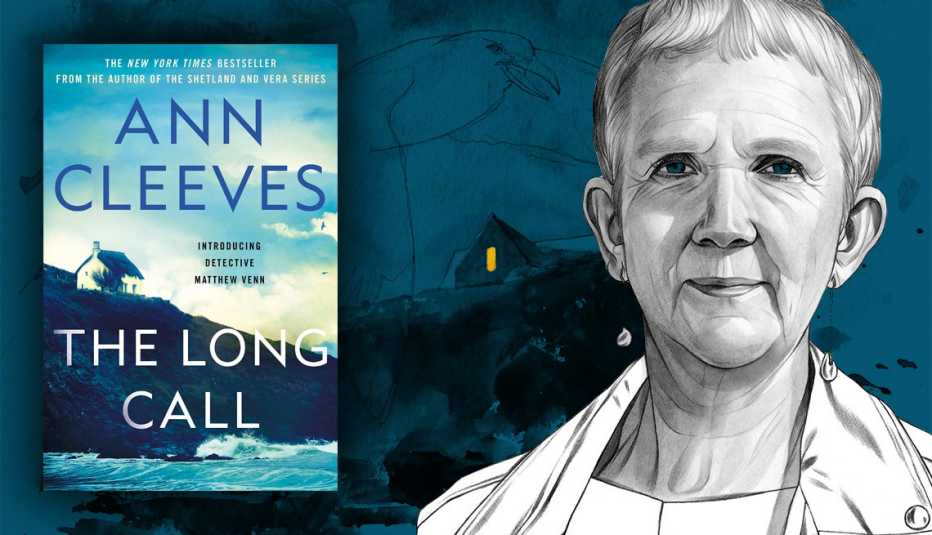AARP Hearing Center
A few years ago, artist and illustrator Stan Fellows was snarled in traffic on the way to a flight at Denver International Airport when it hit him that the painter’s mindset applies as much to clogged highways as it does to blank canvases.
“I took a breath and carefully observed what was around me,” Fellows says in a voice as calming as a Colorado snowfall. He lives in Longmont, outside Boulder. “I thought, ‘The light on the license plate ahead of me is pretty, and the metal frame has one hex nut and one Phillips screw, which is curiously beautiful.’” Fellows says his pulse slowed as his creativity awakened and he focused on how he would render such a scene.
At 63, after four decades illustrating for publications such as The New York Times, Harper’s Magazine, The Atlantic and National Geographic, and companies including Harley-Davidson, Fellows is distilling some of the deeper lessons he’s learned by way of online art workshops that he’s hosting during the pandemic. His is also the brush behind the evocative watercolors accompanying a serialized mystery book, The Long Call, on AARP Members Only Access. Fellows painted more than 20 original pieces to match the suspense and slow unraveling of best-selling crime author Ann Cleeves’ tale of murder, loss and deadly secrets along the British coast.
We spoke to Fellows about the serial project, his classes and how thinking like an artist — even if you’ve never drawn a thing — helps keep you relaxed, sharp and endlessly inspired.
Have you ever done a serialization like The Long Call before?
This was completely unique for me. That’s what made it fun. The trick was telling the story without revealing too much. In a serial, you never want to spill the beans prematurely. It felt old school to me in the best way. It reminded me of old graphic novels or pulp detective stories from the 1950s. The reader stays on a journey that goes on for weeks or months.


You don’t think of watercolors as a way to illustrate a murder mystery. What’s the appeal of that medium for you?
I’ve been hooked on watercolor since high school. I remember walking past a big, big book of work by [realistic painter] Andrew Wyeth. It was open on display in the library to his painting of a pump house. I was instantly struck by how powerful an image it was. The saturation, the composition. The description at the bottom said it was a watercolor. That was a lightning bolt. Watercolor adds a little bit of radiance, kind of a halo. It’s perfectly imperfect, and that’s where the magic lies.
In your online workshop introduction, you say the practice of daily journaling with watercolors can enrich your life generally, even if you have no experience as an artist. How so?
The most important thing is to learn to settle. Even if it’s your first drawing, even if you’re not looking at the paper, even if the drawing is very amateurish, it throws the anchor out. It causes you to slow your life down. Say I’m looking at a house across the street. Maybe you’ve seen it a million times. When you’re painting, you start to notice things. Maybe there’s a little nook. Perhaps the wall has a fish scale pattern. Whereas if I’m standing there with my hands in my pocket, it’s just this house across the street. You might take out your phone and forget about it. But in the role of artist, you slow down enough to notice the window of the door is off-center, just by a hair, and that the gutter is sagging a little bit.
How exactly does that improve your life?
Well, you’re noticing everything. You hear sounds more acutely. An unfamiliar bird. You notice the temperature and specific smells. You notice that you’re hungry. Your mind is suddenly saturated with memory. When you paint something, you’ll remember forever where you were when you did it. It’s a tool that holds you to the moment longer than you normally would, and it keeps your mind from wandering. Once you become acquainted with the feeling of nothing, of being still, of being calm in your practice, it’s easier to access that quickly, the way I did when I felt myself getting stressed on the way to the Denver airport.
By the way, did you make it to your flight?
Ha! I made the flight. I always leave enough time for several things to go awry and still make the plane, and on that day hit the trifecta of snags but walked onto the plane at the last minute and — zoom! — we were off.
































































You Might Also Like
Art Tutorial By Stan Fellows: Watercolor Basics for Journaling
Easy-to-follow class covers materials and techniques, and shows how to paint a mini masterpiece
Finding Peace in Trimming Bonsai
Following in Mr. Miyagi’s footsteps, writer centers himself by working with trees
More Members Only Access
Watch documentaries and tutorials, take quizzes, read interviews and much more exclusively for members